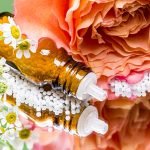Post-Pill Amenorrhea
Lindsay Martens, ND
Post-pill amenorrhea is a frustrating adverse effect of using hormonal birth control. The use of hormonal contraceptives is on the rise and is expected to continue to increase as more young people age. In Canada, 72% of married women are using a “modern method” of birth control; 22% of that is hormonal in nature, from birth control pills (BCPs) to injection therapy.1 The most common reason for these women to discontinue hormonal contraceptives is because they want to start a family. If their menstrual cycle does not resume a regular pattern, their ability to conceive a natural pregnancy is greatly decreased. This group of women will often be referred for and treated with allopathic infertility treatments. With naturopathic management, we can support these women to start having regular menstrual cycles again and increase their natural fertility.
Case Study
AM’s History
AM, a 26-year-old woman, came to see me in January 2011 with secondary amenorrhea following the use of a BCP containing drospirenone–ethinyl estradiol. She had been taking BCPs for the past 10 years and had discontinued their use in September 2010 because she and her husband wanted to start a family.
AM had experienced no bleeding or spotting since September 2010. She had started taking her basal body temperature (BBT) in December 2010, and it was steady at 36.2°C, with no fluctuations. She had also started paying attention to her cervical fluid but was not noticing any changes there either. She had had a visit with her MD in December; he had ordered blood work, and everything tested was within normal limits.
Before starting BCPs, AM had had irregular menstrual cycles. As a teenager, she was extremely athletic, participating in competitive sports and track and field, and she had a low body weight. At the first visit, her weight was 118 lb, and she was 5 ft 4 in, for a body mass index of 20.3. Her activity levels were moderate; she ran for about 30 minutes 3 times per week and went to Pilates and yoga classes.
Other remarkable history for AM was that she had a sluggish digestive system and tended to be constipated. Her bowel movements were 3 to 4 times per week, hard and dry. She ate probiotic yogurt daily and found that it helped to make her bowel movements a bit easier. She also noticed that her digestive system was sensitive; certain foods such as red meat and dairy would cause her to be constipated, bloated, and gassy. She had a very stressful job, and she found her energy level to be low, especially first thing in the morning.
Whenever I see patients who are coming off BCPs, my initial treatment plan will include some support for the hypothalamic-pituitary-ovarian axis; the hormones in BCPs are inherently disruptive to that pathway. I also include liver support to help eliminate excess hormone at the beginning of treatment. For AM, her stress levels were very high, and she perceived that she was not able to handle the stress well. She described it as “out of control” and feeling “underwater,” so I was also concerned about her adrenal gland function. Initial treatment included the following nutritional guidelines.
Nutritional Guidelines
I instructed AM to pay attention to how much protein she is getting throughout the day. I also wanted her to make sure that she is getting an adequate amount of protein (approximately 15-20 g) at breakfast. I suggested that she should incorporate an isolate whey protein powder or 2 eggs on a daily basis. I recommended an increase in healthy fats through the consumption of coconut oil, olive oil, and avocados, as well as the following: (1) A reproductive formula containing chasteberry, black cohosh, and ashwagandha to support ovarian function, pituitary function, and adrenal glands. (2) A liver and kidney formula containing milk thistle, Picrorhiza kurroa, bearberry, stinging nettle, and burdock to support liver and kidney detoxification pathways. This was to be used for 5 weeks. (3) A probiotic formula (60 billion live organisms per day) in a blend of Lactobacillus acidophilus and Bifidobacterium lactis.
Subsequent Visits
At our second visit, 6 weeks after the initial visit, AM reported that her bowel movements were much better, and her BBT chart was starting to have some up and down variations to it. Her face was starting to break out with acne, and she was having strong sugar cravings. She still reported that her stress levels were very high, and she was having a hard time handling her work because her energy levels were low. Treatment recommendations at this visit included the following: (1) Continue with the reproductive formula and probiotic formula. (2) Add an adrenal formula containing Cordyceps mycelium, Panax ginseng, and Rhodiola rosea. (3) Stop taking the BBT because she was finding it extremely stressful.
At our third visit, 6 weeks later, AM reported having lots of hormonal-type symptoms, including intense breast tenderness, skin breakouts, and constipation for the past week. Before that week, things had been going well. Her bowel movements were easier and more frequent (6-7 per week), she was handling stress at work better, and her energy levels were improving. Treatment recommendations at this visit included the following: (1) Continue with the reproductive formula, probiotic formula, and adrenal formula. (2) Add evening primrose oil (3000 mg/d).
An e-mail I received 1 week later from AM said that she had started bleeding the day after our visit. She was starting to take her BBT again. At our fourth visit, 6 weeks after our third visit, AM showed me her BBT charts. She had had a temperature shift on day 23 of her cycle and had started her second cycle of bleeding on day 36. A few days before the temperature shift, she had noticed an increase in her cervical fluid. We continued with the treatment plan that we had started at our third visit. Four weeks later, I got an e-mail from AM saying that she had a positive result on an at-home pregnancy test! We had previously discussed that she would discontinue the reproductive formula and the adrenal formula when pregnancy occurred.
During her pregnancy, AM continued to take the probiotic formula and started a fish oil supplement that provided her with 2 g/d of omega-3 oil. AM had an easy and strong pregnancy; she gave birth to a beautiful baby girl in March 2012.
 Lindsay Martens, ND is a graduate of the Canadian College of Naturopathic Medicine, Toronto, Ontario. She maintains a private practice in London, Ontario, focusing on naturopathic fertility treatment and women’s hormonal health. For more information, please visit her website at www.naturopathicfertility.com, or follow her on Twitter @naturofertility.
Lindsay Martens, ND is a graduate of the Canadian College of Naturopathic Medicine, Toronto, Ontario. She maintains a private practice in London, Ontario, focusing on naturopathic fertility treatment and women’s hormonal health. For more information, please visit her website at www.naturopathicfertility.com, or follow her on Twitter @naturofertility.
Reference
- Population Reference Bureau. Family planning worldwide: 2008 data sheet. 2008. http://www.prb.org/pdf08/fpds08.pdf. Accessed May 1, 2012.










